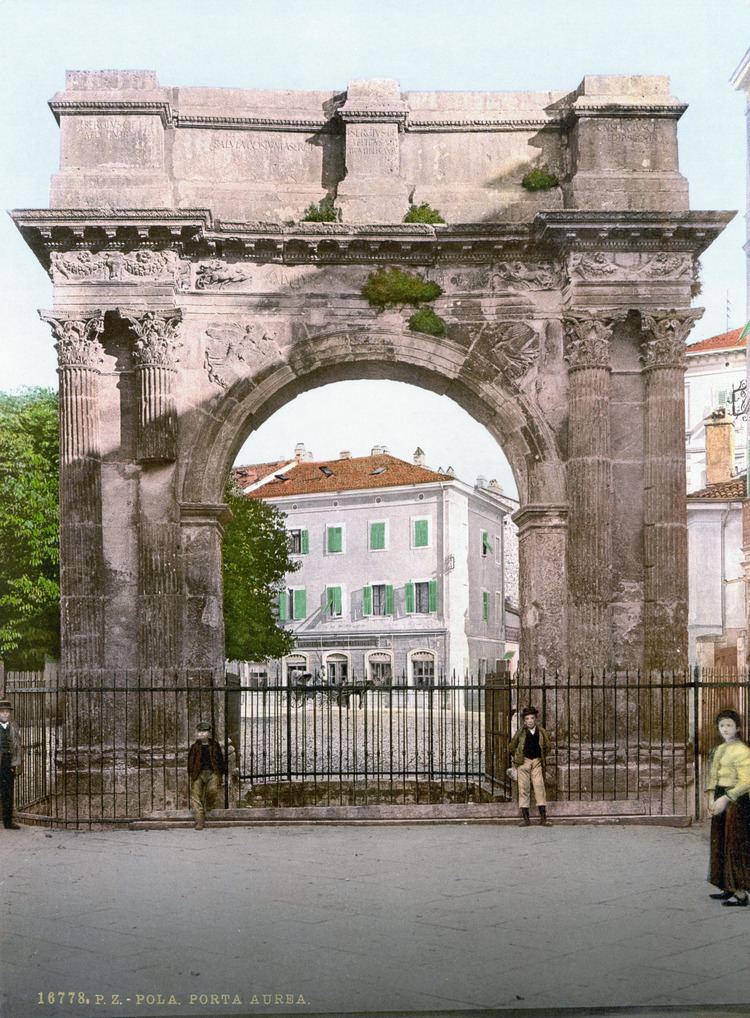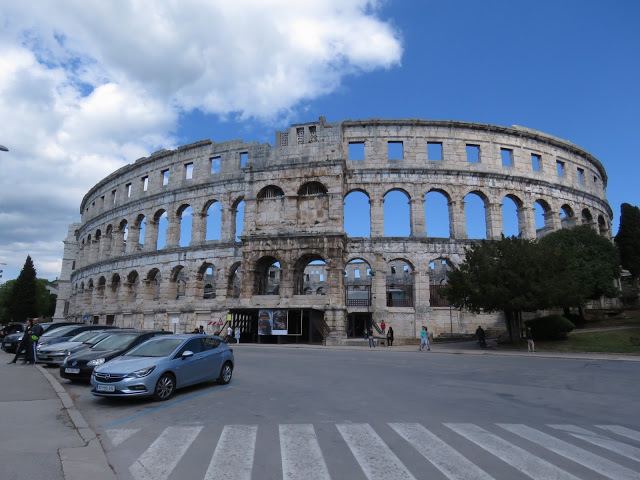Address Pula, Croatia Type Triumphal arch Height 8 m | Dedicated to The Sergii family Completion date 28 BC Name Arch the Beginning date 30 BC | |
 | ||
Coordinates 44°52′6″N 13°50′50″E / 44.86833°N 13.84722°E / 44.86833; 13.84722 Similar Temple of Augustus, Pula Arena, Brijuni, Arc de Bera, Veliki Brijun | ||
Arch of the Sergii in Pula
Arch of the Sergii is an Ancient Roman triumphal arch located in Pula, Croatia. The arch commemorates three brothers of the Sergii family, specifically Lucius Sergius Lepidus, a tribune serving in the twenty-ninth legion that participated in the Battle of Actium and disbanded in 27 BC . This suggests an approximate date of construction: 29-27 BC. The arch stood behind the original naval gate of the early Roman colony. The Sergii were a powerful family of officials in the colony and retained their power for centuries.
Contents
- Arch of the Sergii in Pula
- Slavoluk Sergijevaca Triumphal Arch of the Sergi 3D LS Vektra d o o
- History
- References

Slavoluk Sergijevaca (Triumphal Arch of the Sergi - 3D LS Vektra d. o. o.)
History

The honorary triumphal arch, originally a city gate, was erected as a symbol of the victory at Actium. It was paid for by the wife of Lepidus, Salvia Postuma Sergia, sister of the three brothers. Both of their names are carved in the stone along with Lucius Sergius and Gaius Sergius, the honoree's father and uncle respectively. In its original form, statues of the two elders flanked Lepidus on both sides on the top of the arch. On either side of the inscription, a frieze depicts cupids, garlands and bucrania.

This small arch with pairs of crenelated Corinthian columns and winged victories in the spandrels, was built on the facade of a gate (Porta Aurea) in the walls, so the part, visible from the town-side, was decorated. The decoration is late hellenistic, with major Asia Minor influences. The low relief on the frieze represents a scene with a war chariot drawn by horses.
This arch has attracted the attention of many artists, like Michelangelo.
